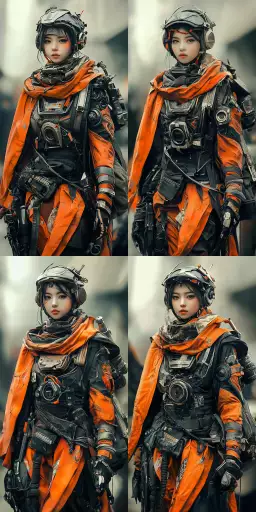Explore the Best AI Image Gallery

Painted Pixels and Kinetic Canvas: Exploring the Impact of AI-Generated Visual Content
The realm of art and design is undergoing a profound metamorphosis as artificial intelligence (AI) steps onto the canvas, wielding algorithms to generate breathtaking visuals. AI-generated visual content, encompassing everything from stunning paintings and intricate 3D models to dynamic animations and captivating videos, is rapidly changing the landscape of creativity, offering both exhilarating possibilities and complex ethical challenges.
A New Frontier in Creative Expression
AI-powered tools are democratizing art creation, empowering individuals with limited technical skills to bring their imaginative visions to life. Imagine a world where anyone can conceptualize a scene, describe its elements, and have an AI algorithm translate those words into a tangible artwork. This accessibility has the potential to unleash a wave of artistic innovation, fostering new styles and perspectives.
- Unleashing Artistic Potential: AI tools can act as powerful collaborators, assisting artists in overcoming creative blocks, exploring unconventional ideas, and refining their concepts.
- Efficiency and Productivity: Generating repetitive visual elements or variations of a design can be time-consuming for artists. AI algorithms can automate these tasks, freeing up valuable time for more conceptual and creative endeavors.
- Personalized Experiences: AI can tailor visual content to individual preferences, generating unique artwork based on user input, mood, or even personal data.
Transformative Applications Across Industries
The impact of AI-generated visual content extends far beyond the realm of fine art. Its applications are diverse and transformative across various industries:
- Marketing and Advertising: AI can create captivating visuals for campaigns, personalize ads based on consumer data, and generate dynamic content that adapts to real-time trends.
- Entertainment and Gaming: From realistic game environments and character models to stunning cinematic sequences, AI is revolutionizing the way we experience entertainment.
- Education and Training: Interactive visualizations generated by AI can enhance learning experiences, making complex concepts more accessible and engaging.
Navigating Ethical Considerations
While AI-generated visual content presents immense opportunities, it also raises crucial ethical considerations:
- Copyright and Ownership: Questions arise regarding the ownership of AI-generated artwork. Who holds the copyright – the creator of the algorithm, the user who provides input, or the AI itself?
- Bias and Representation: AI algorithms are trained on vast datasets, which can contain biases that reflect societal inequalities. This can result in AI-generated content perpetuating stereotypes or excluding certain groups.
- Job Displacement: The automation of creative tasks by AI raises concerns about potential job losses for artists and designers.
The Future of Creativity: A Symbiotic Relationship
Looking ahead, the future of creativity lies in a harmonious collaboration between human imagination and AIs computational prowess. AI will become an invaluable tool, augmenting human creativity rather than replacing it. Artists will leverage AI to explore new frontiers, push artistic boundaries, and create works that are both innovative and meaningful.
As technology advances, the lines between human and machine creativity will continue to blur. This evolution presents a unique opportunity to redefine what it means to be an artist in the 21st century. By embracing ethical considerations and fostering responsible development, we can ensure that AI-generated visual content empowers us to create a more imaginative, inclusive, and visually captivating world.